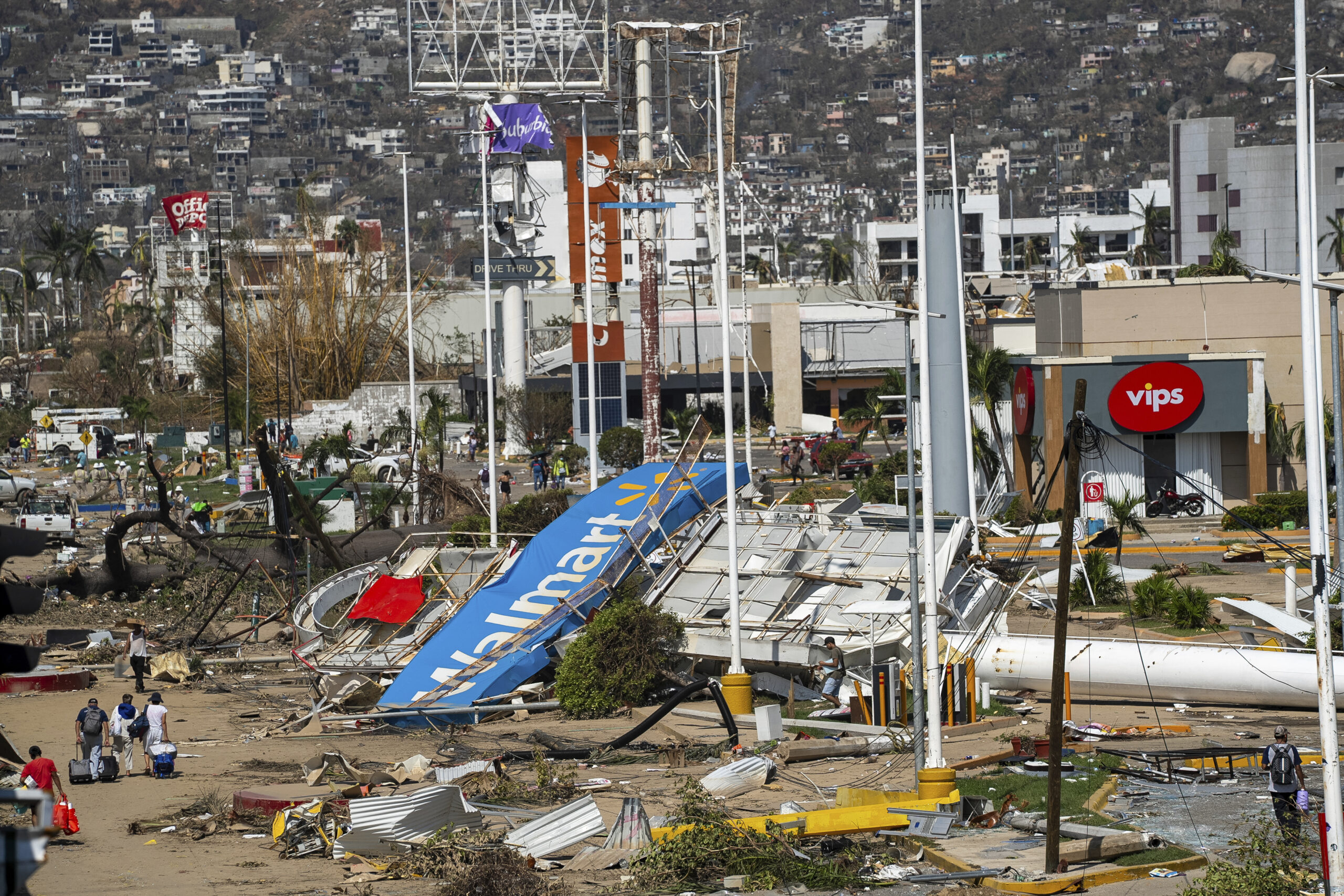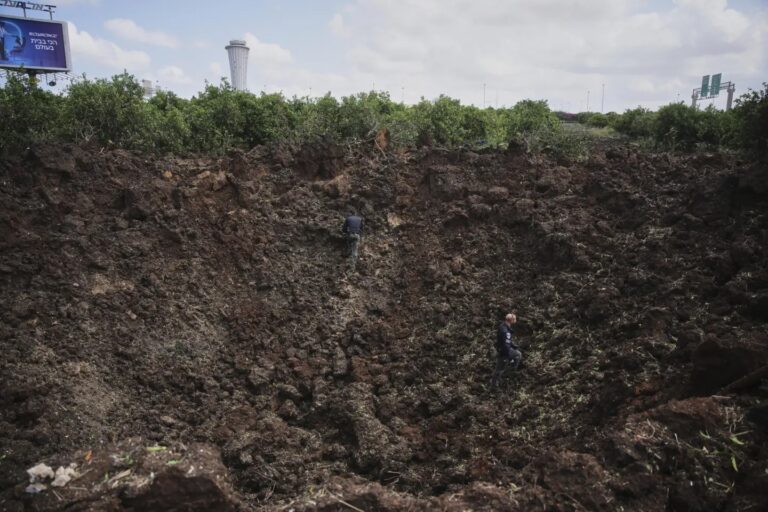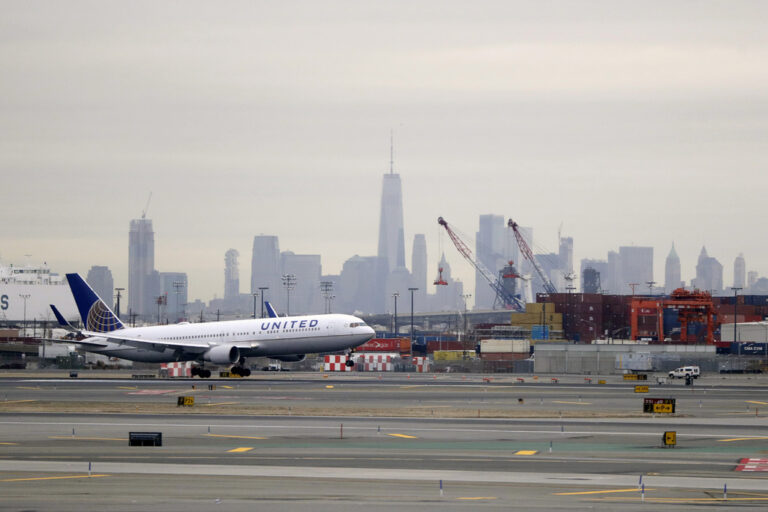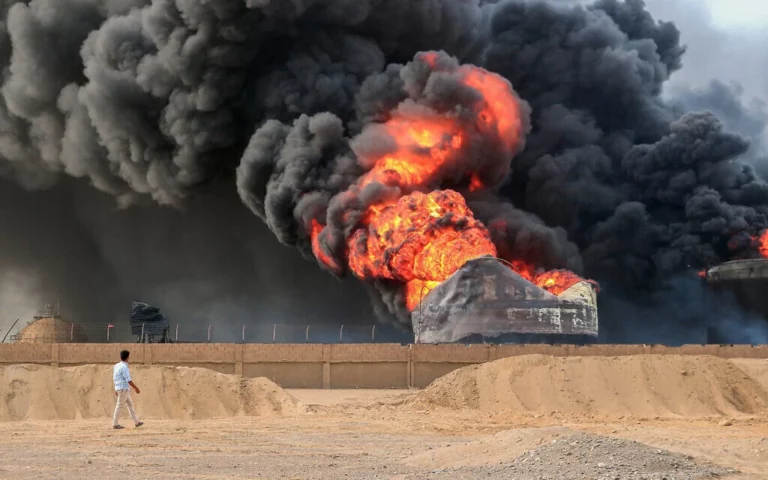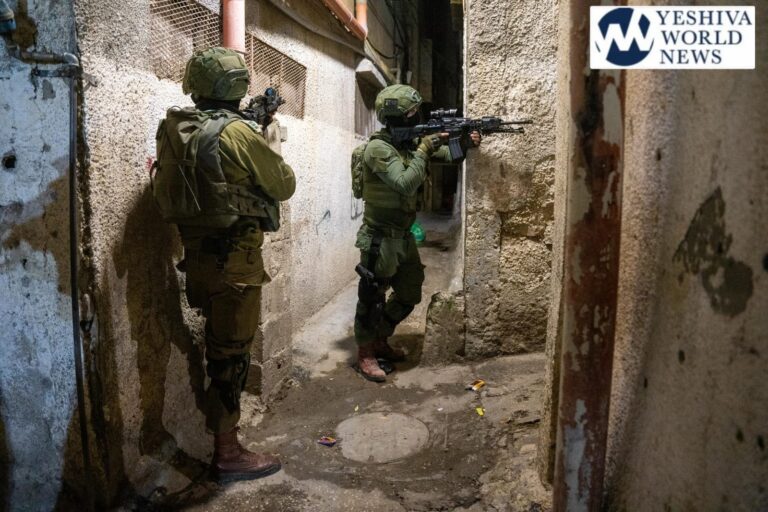Mexican officials raised the death toll to 39 on Saturday from Hurricane Otis, which struck the country’s southern Pacific coast including the resort city of Acapulco early Wednesday as a powerful Category 5 storm.
Security Secretary Rosa Icela Rodríguez said in a recorded video message with President Andrés Manuel López Obrador posted to the platform X that the probable cause of death for the 39 was “suffocation by submersion.” She said the victims had not yet been identified and that investigations continue.
The new death toll was an increase of 12 over the initial tally of 27 announced Thursday. But the storm’s human toll was becoming a point of contention as local media reported the recovery of more bodies and López Obrador criticized opponents for trying to make it a political issue.
Rodríguez also said the number of missing rose to 10. Hundreds of families have been awaiting word from loved ones.
In Acapulco on Saturday, government workers and volunteers cleared streets, gas station lines wrapped around the block for what fuel was to be had, and some lucky families found food essentials as a more organized relief operation took shape four days after the storm hit.
Military personnel and volunteers worked along Acapulco’s main tourist trip. They sliced through fallen palm trees and metal signs. Cellphone signals were partially recovered near some of the city’s most luxurious hotels, and authorities placed a charging station for people to charge their phones.
But on the periphery of the city, neighborhoods remained in total chaos. The government presence found in the touristic center was not visible in other neighborhoods. With no signal, with no water and no food, families and the elderly trudged through foot-deep mud and flooded streets to get to large warehouses someone had found full of food, taking bags of food and liquids.
Aid has been slow to arrive. The Category 5 storm’s destruction cut off the city of nearly 1 million people for the first day; it had intensified so quickly on Tuesday that little to nothing had been staged in advance.
Authorities had the difficult task of searching for the dead and missing. Many had remained incredulous that the government’s initial death toll of 27 and four missing had not risen in the past two days. Hundreds of families awaited word from loved ones.
One military official, who did not want to give his name because he was not authorized to speak to media, said officials in his area had found at least six bodies and that his own unit had found one. It had been difficult to find bodies because they were often covered in trees and other debris, he said.
In another part of the city, Orlando Mendoza, 46, walked down a highway drenched in sweat carrying two bags of tuna, sardines, water, pasta and soup. He was bringing food to his wife and three young children.
“Even though it isn’t much, it’s something,” he said as he walked down the winding mountain highway toward the city center.
A group of volunteers from the central state of Puebla who scraped together some money to help out people in the city were handing out bags of food to families like Mendoza’s gathered on the side of the highway.
Abel Montoya, 67, had been waiting in line for gasoline with hundreds of other people for an hour and a half Saturday holding an empty jug. Soldiers were overseeing the distribution of gasoline, presumably to avoid the uncontrolled ransacking of stores that happened across the city in recent days.
“I need to be able to move to search for water and ice,” he said. “Now there’s this shortage of food and I might even have to leave Acapulco, go to (the state capital) Chilpancingo.”
Gasoline had been unavailable, not because there wasn’t any, but because there was no electricity to operate the pumps.
Most families anxiously hunted for water, with some saying they were rationing their supplies. The municipal water system was out because its pumps had no power.
Officials said the military presence would grow to 15,000 in the area and López Obrador called on his armed forces to set up checkpoints in the city to avoid robberies.
López Obrador said the national electric company had told him that service had been resumed to 55% of customers in the affected area but that more than 200,000 homes and businesses remained without power.
The federal civil defense agency had tallied 220,000 homes that were damaged by the storm, he said.
(AP)

